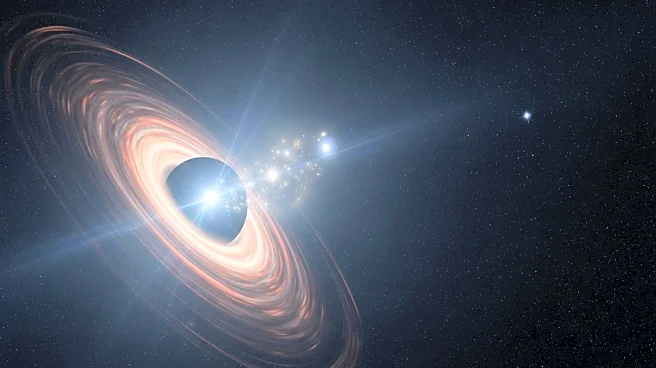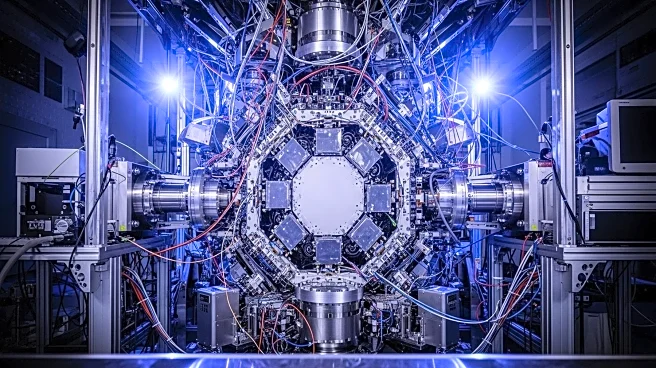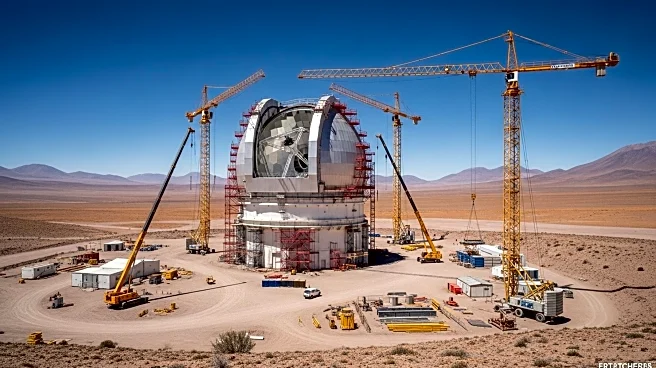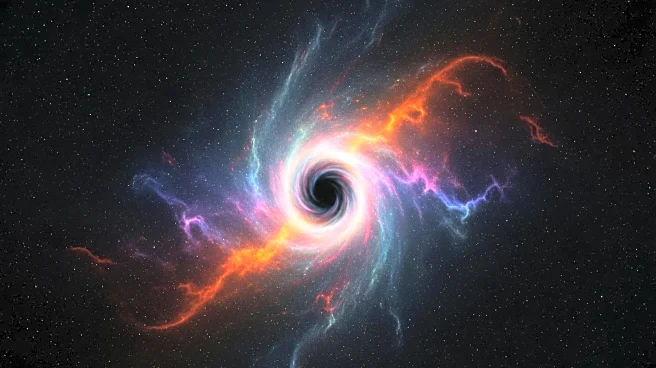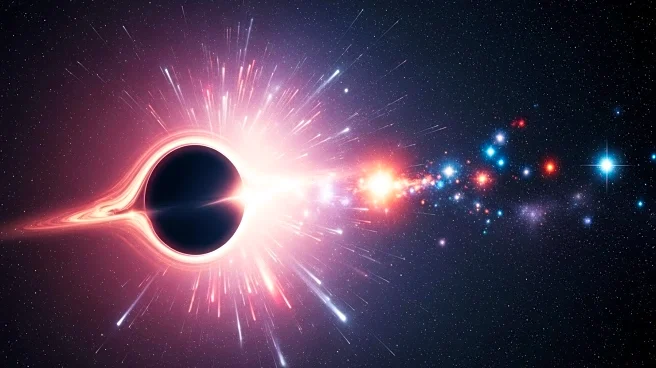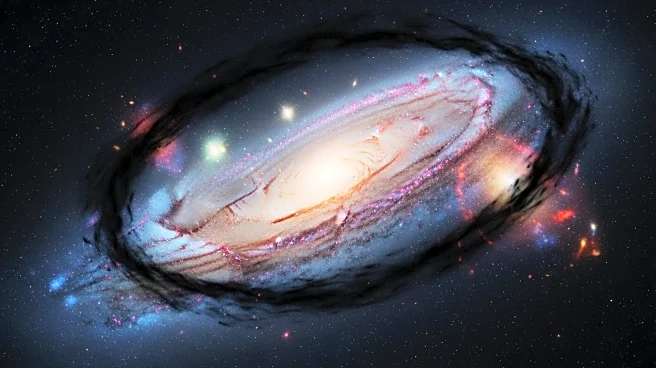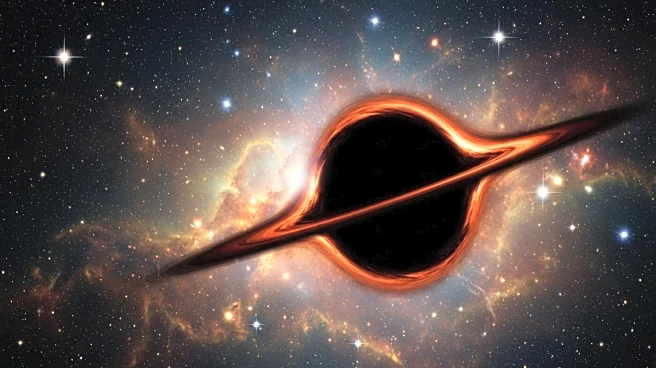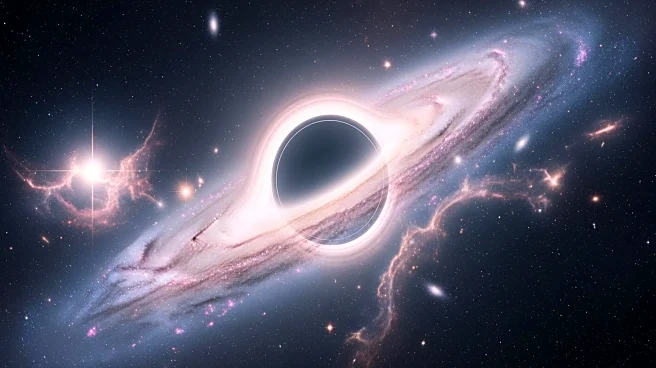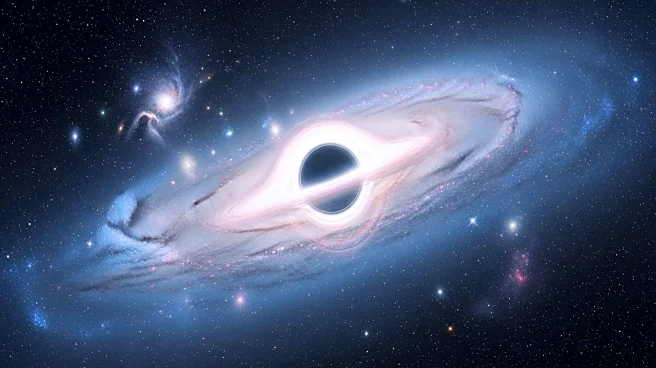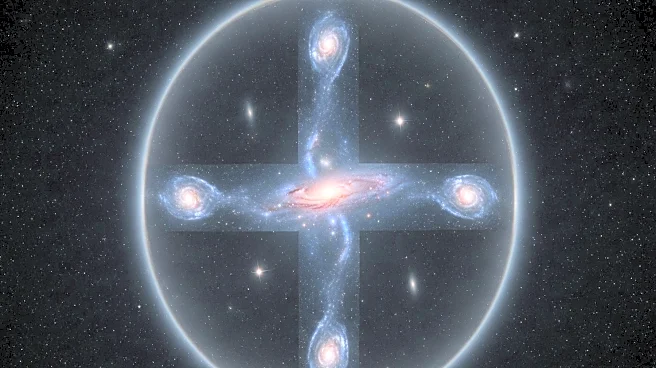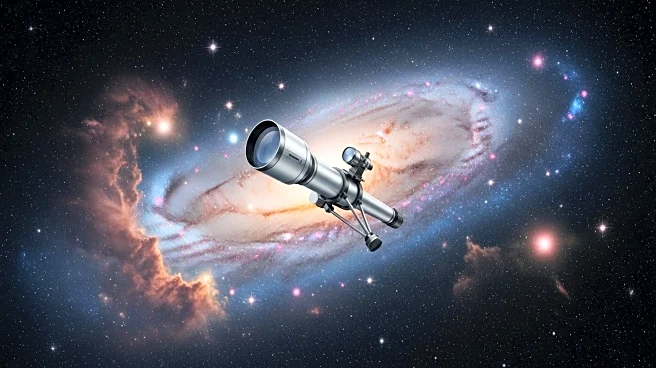What is the story about?
What's Happening?
MIT physicists propose that a highly energetic neutrino detected recently may originate from the final explosion of a primordial black hole (PBH) near our solar system. Primordial black holes are theorized to have formed shortly after the Big Bang and could constitute most of the dark matter in the universe. The study suggests that the explosion of a PBH could produce ultrahigh-energy neutrinos, potentially providing the first observational evidence of Hawking radiation. This scenario aligns with the detection of the highest-energy neutrino recorded by the KM3NeT detector, located in the Mediterranean Sea.
Why It's Important?
The study offers a potential explanation for the origin of ultrahigh-energy neutrinos, which have puzzled scientists due to their unusually high energies. If primordial black holes are confirmed as the source, it would support the hypothesis that they make up most of the dark matter in the universe. This discovery could revolutionize our understanding of dark matter and black holes, providing insights into fundamental physics and the early universe. The findings could also lead to new research directions in astrophysics and particle physics, focusing on detecting Hawking radiation and exploring the nature of dark matter.
What's Next?
Further detections of high-energy particles, including neutrinos, are needed to confirm the hypothesis. Scientists aim to build better statistics regarding such rare events to validate the presence of Hawking radiation. Additional efforts to detect nearby primordial black holes could bolster the hypothesis that these objects constitute most of the dark matter. The study encourages continued exploration of high-energy cosmic phenomena and the development of advanced detection technologies to uncover the mysteries of the universe.
AI Generated Content
Do you find this article useful?
